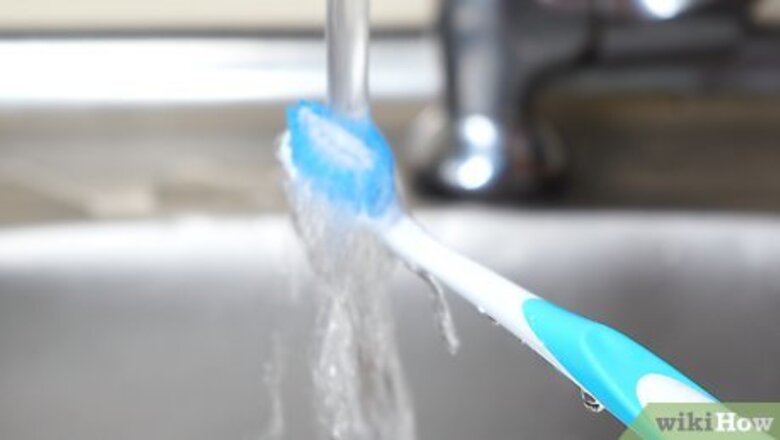
views
X
Trustworthy Source
American Dental Association
World's largest dental professional organization and advocate for proper oral health
Go to source
Sanitizing Your Toothbrush
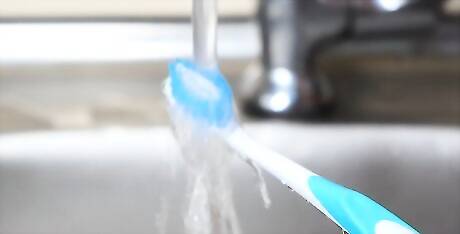
Rinse the toothbrush with hot tap water before and after brushing. Hold the toothbrush from the handle grip with your thumb. Run the bristles back and forth repeatedly under the hot water. Do this every time, before and after, you brush your teeth and make sure it has been completely cleaned.

Dry the toothbrush thoroughly. After finishing a cleaning session you need to shake out the bristles, and make sure the moisture is gone. Tap the brush handle against a hard surface, such as the sink, to get some of the water out of the bristles. You can also shake the brush briskly over the sink, bristles face down, to get more moisture out, but never let the brush touch the sink. Let the brush finish drying without the bristles coming into contact with any other surface. If the bristles touch any other surface, then you might want to re-run them under hot water, and start the drying process over.

Rinse the toothbrush in an antibacterial rinse. Use an alcohol-based rinse or even chlorhexidine 0.02 % mouthwash for this. Pour some of the rinse into a clean plastic cup. Just pour enough to dip the toothbrush head and bristles in. Grasp the toothbrush by the handle grip and dip the bristles into the rinse. Swish the bristles around in the rinse for 30 seconds. Remove the brush, tap the handle on a hard edge (such as the sink) to shake out any moisture, and then store it upright to dry without the bristles coming into contact with other surfaces or other bristles of someone else's toothbrush. Dispose of the cup. Never dip the brush into the main bottle of rinse, or you risk cross-contaminating the entire bottle as well as the brush. Extend this rinse to a 10 minute soak if you are sick.
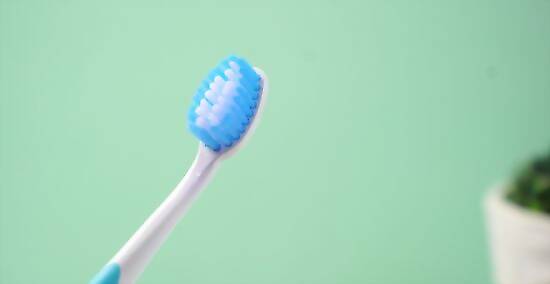
Bathe the toothbrush under ultraviolet light. Many sanitizers use ultraviolet (UV) light to kill the bacteria on the bristles of the toothbrush. The basic technique is the same for most of these devices. Open a user accessible casing of the device. Insert the toothbrush or toothbrush head (in the case of electric brushes) into an internal compartment. Close the casing. Turn on the device and let the UV light clean the bristles for the instructed period—usually just a few minutes. Remove the brush when the device signals you to do so. There are some alternative methods to these automatic sanitizers that use steam or soundwaves instead of UV light. The steps to use them will be mostly the same, but the duration of the cleaning may differ. Also, the sanitizers using steam have almost the same rate of eliminating bacteria similar to the UV ones.
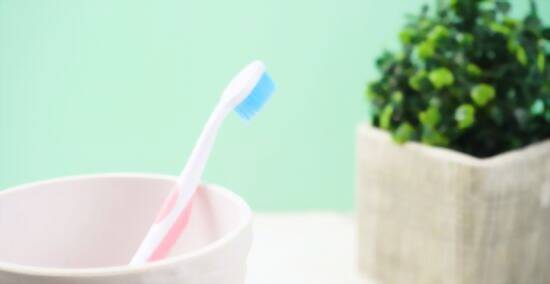
Replace the toothbrush every 3-4 months or as needed. Sometimes the best policy is to simply get a new toothbrush. The American Dental Association recommends replacing your brush every 3-4 months. However, closer examination of the bristles can tell you if replacement needs to happen sooner. Look for the bristles to be individually fraying (splitting at the ends). Also if you see whole sets of the bristles bent in one direction without returning to an upright position even after drying, then it is time for a new brush. Some toothbrushes have some colored bristles on them, which indicates when to change the toothbrush. As the color starts to fade and becomes almost the same as the other bristles, it is time to get a new toothbrush.
Storing the Toothbrush
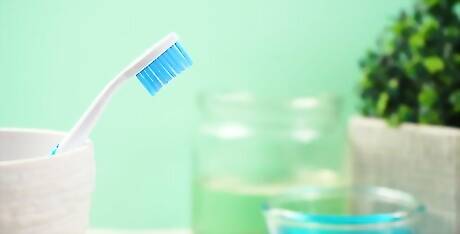
Put the toothbrush in a dry place. Keeping the brush dry after a cleaning session is important to avoiding bacterial contamination. Check the area you are storing your brush and its container for adequate ventilation. You want air to flow to prevent bacteria from concentrating on the brush.
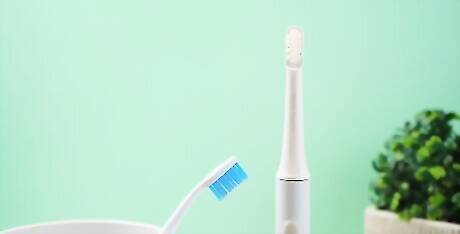
Stand the toothbrush upright. This will accomplish two sanitary features. Firstly, it will allow the water and any other fluids to drain from the bristles with gravity. Also, the bristles will not be sitting in any bacteria collecting in the bottom of the container. Make sure the container you select is short enough to allow the toothbrush to lean so the bristles are well above the rim, but not so high it tips over. Whether you use a cup or rack-style container—you might want to put paper towels under the area you store the toothbrush to catch its drippings. This way you can dispose of the contaminated fluids without them contacting other surfaces.

Move the container away from other surfaces. You don’t want the toothbrush bristles coming in contact with other contaminant sources such as a toilet, wall, or cabinet. Keep any containers two to three feet away from a toilet to avoid spray-contamination from flushing. Another good option is to keep toothbrushes inside the bathroom cabinet.
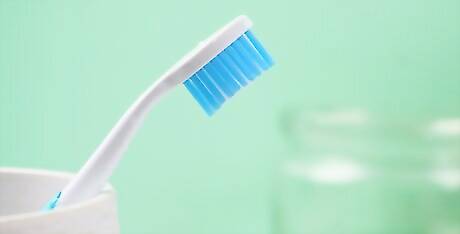
Install a wall mounted toothbrush holder. You can put the brush in a holster that has a mounting that keeps it stationary on a wall. Purchase a mounting bracket and holder from a hardware store. Use a screwdriver to fasten the bracket to the wall near the back of the bathroom sink at least 2-3 feet away from the toilet, shower, and/or bathtub. Place the toothbrush holder onto the bracket by sliding it vertically into place. These holders usually have room for several brushes. Make sure the brushes don’t touch each other. There is also usually a center holder for a cup to hold accessories such as toothpaste. Make sure the toothbrush bristles don’t touch the center items either.
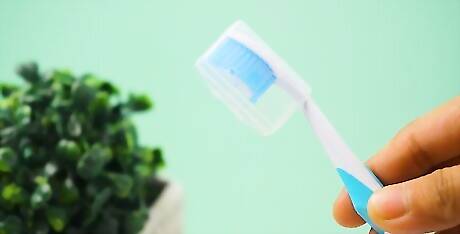
Cover the toothbrush when mobile. The only time you should cover your toothbrush is when traveling. There are plenty of commercially available covers, and some even have antimicrobial features. Use the latter if available. Whichever you choose will function mostly the same way--by slipping the brush head with bristles into the cover’s pocket, and sealing or snapping it shut on the top-end (non-handle end). Take the brush out as soon as you reach your destination to clean it and give it time to dry before usage.













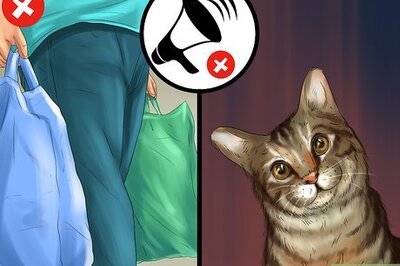






Comments
0 comment